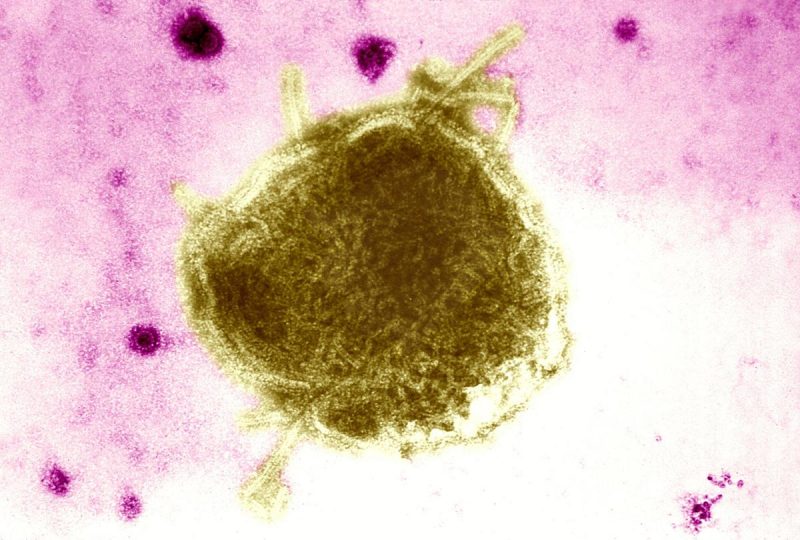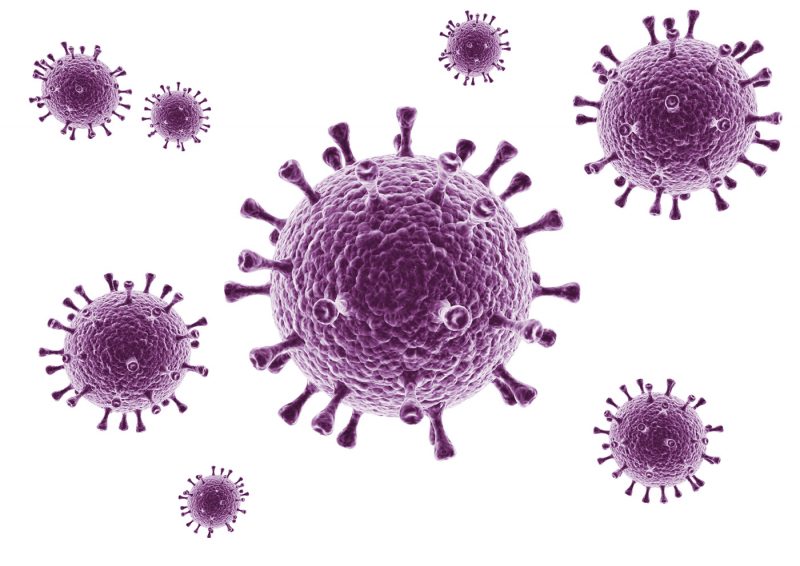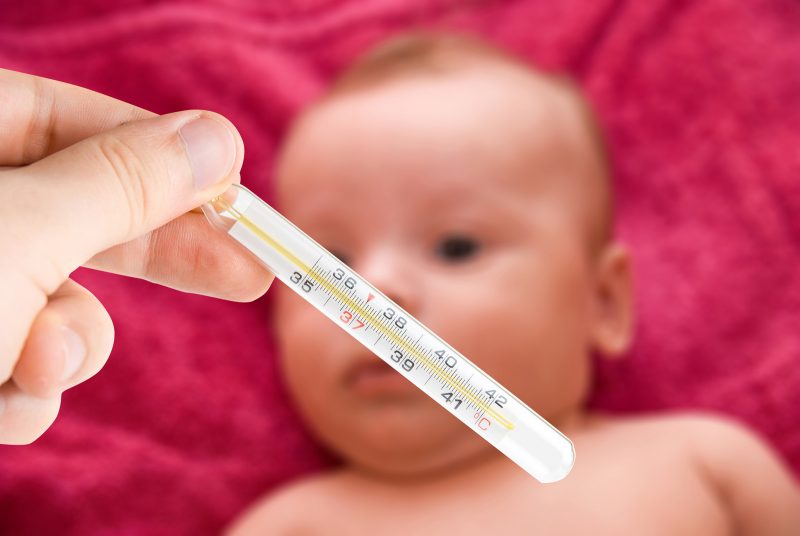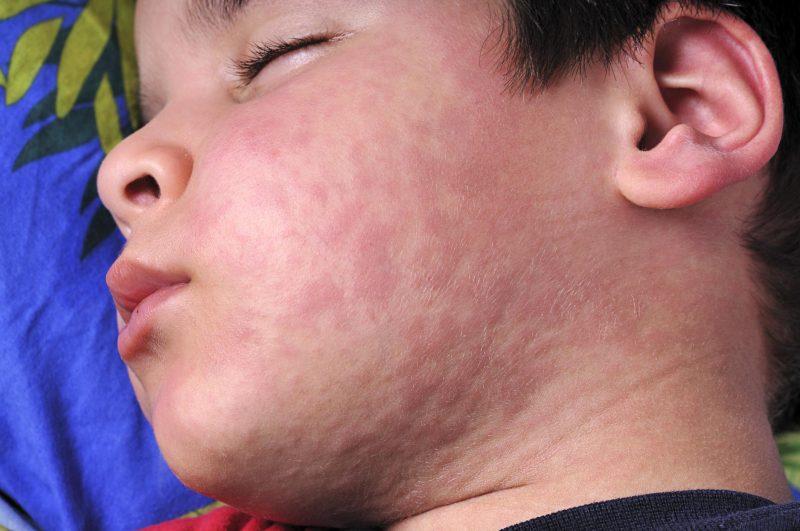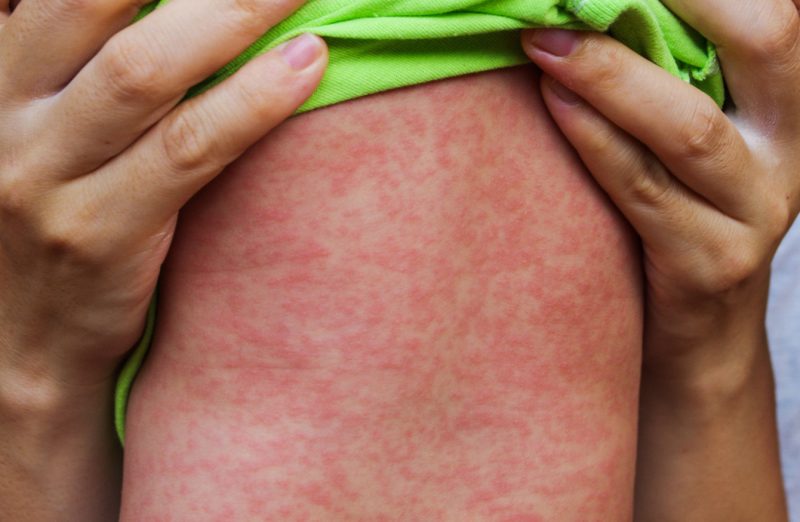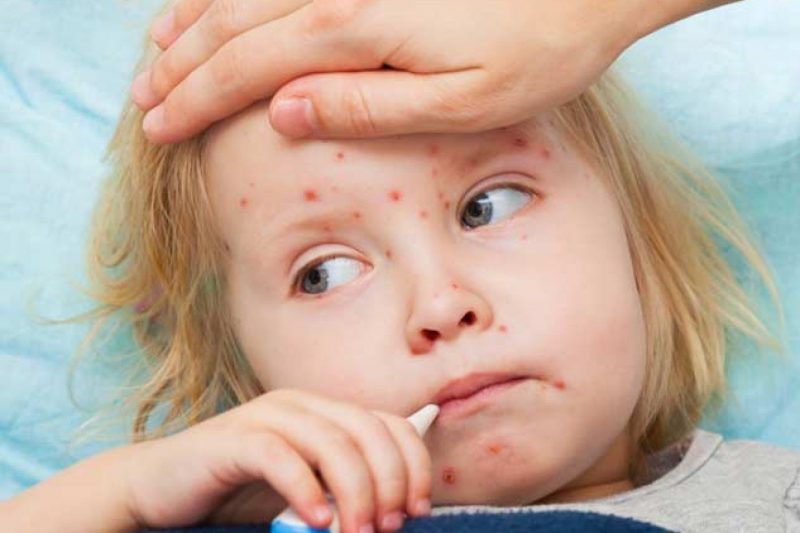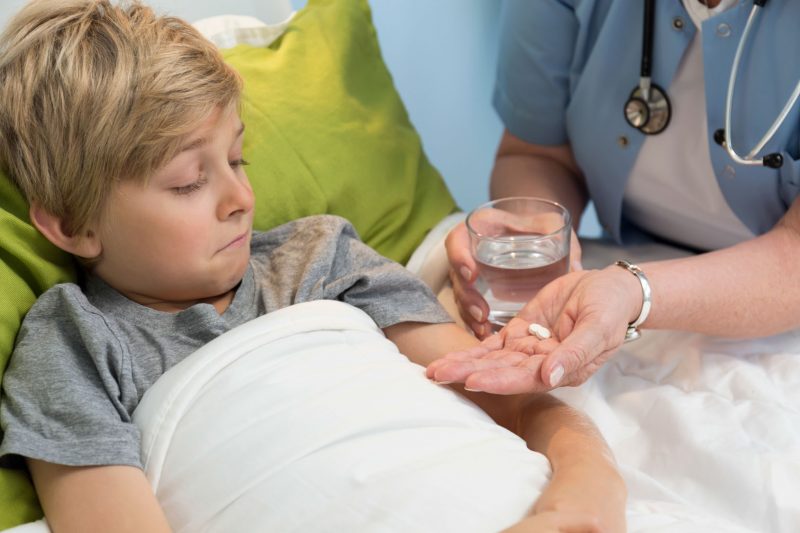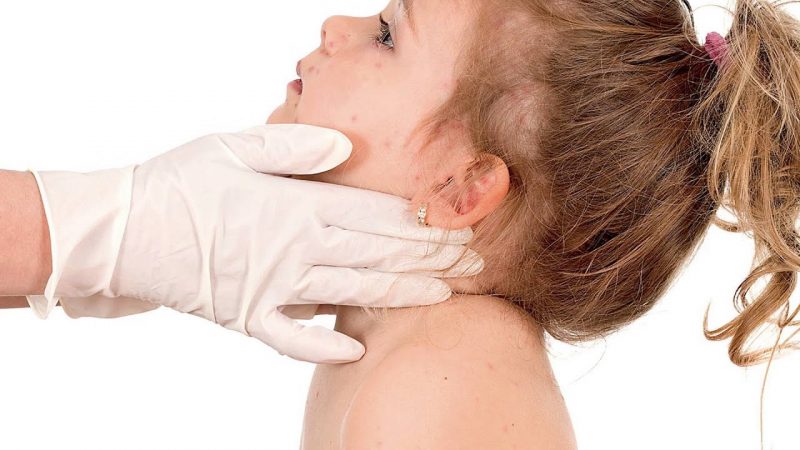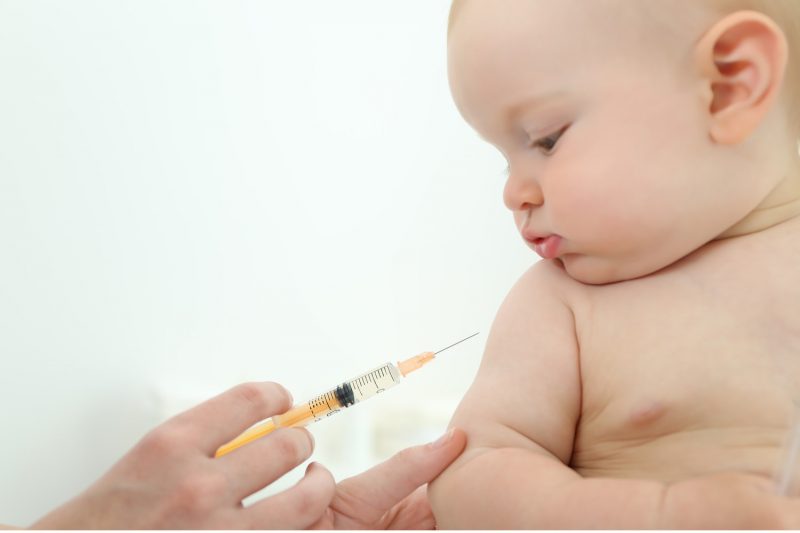Measles is an acute infectious disease of viral etiology with a high degree of contagion. Despite the fact that pathology is considered a childhood disease, the infection also affects the adult population. How is measles manifested, what danger does it pose for the child's body and adults? Most often, children from 2 to 7 years old are sick. The severity of the process is associated with the state of the immune system in both small and large patients.
Material Content:
What is measles and its causes
The disease is an acute infection caused by the measles virus, which is manifested by severe intoxication of the body, catarrhal phenomena and changes in the skin. The causative agent of measles is an RNA virus that is a member of the genus Morbillivirus.
In the environment, he quickly dies, but can survive at room temperature. The virus maintains its highest vital activity at -15-20 degrees below zero. The disease is most often recorded in the autumn-winter period of time, when there is a decrease in immunity in children.
The infection is transmitted by airborne droplets when coughing or sneezing from a patient to a healthy person. Therefore, infection often occurs in preschool and school institutions.
Incubation period and pathogen
The penetration of the virus into the body occurs through the oral cavity and nasopharynx. Intruding into their mucous membrane, it begins to actively multiply there, accumulating in the epithelial cells and lymph nodes, with the subsequent spread of blood flow throughout the body.
The latent or latent period of the disease lasts from 1 to 2 weeks. Before it ends, in 1-2 days, the virus begins to be released into the environment before the period of rashes on the skin.
Infection through contact with household items is excluded due to the low resistance of the virus to the external environment. If the infection occurred in a pregnant woman, it is possible to transmit the infection through the blood-brain barrier of the placenta to the unborn baby.
Carriage of the causative agent of the disease is not observed. The transferred infection leaves a lasting immunity.
The first signs of a viral disease
The first signs of measles have a clinical similarity with acute respiratory viral infections, so often parents begin self-treatment of a child with antipyretic drugs and antibiotics. Such actions on the part of parents are unacceptable, since antibacterial drugs do not act on the virus.
An acute infectious viral disease manifests itself at the initial stage with the following symptoms:
- a sharp jump in temperature - fever can reach 39-40 degrees. If the child is vaccinated, the temperature reaction of the body manifests itself more gently, that is, hyperthermia will be at the level of 37-38 degrees;
- the appearance of a runny nose - the presence of an infection in the nasal cavity provokes an increased permeability of capillaries, which leads to the appearance of a mucous secretion and swelling of the mucous membrane;
- reaction from the gastrointestinal tract - the appearance of diarrhea, loss of appetite;
- the child’s capriciousness - the baby becomes nervous, restless, weakness, poor sleep are noted.
Such manifestations of the infection are commonplace for any catarrhal disease, so often the child receives the wrong treatment before the rash period.
Symptoms of measles in children and adults
Symptoms of measles in children, starting as acute respiratory infections, continue to progress, manifesting themselves in the following clinic:
- 1-2 days after infection by pathogenic microorganisms conjunctivitis joins, accompanied by swelling of the eyelids, with a secretion of purulent nature and photophobia;
- a dry, barking cough appears;
- when examining the pharynx in a child, severe hyperemia and granularity in the region of the posterior pharyngeal wall are noted;
- the appearance of swelling of the face.
The first wave of a hyperthermic state in a child lasts for 3-5 days, after which the fever subsides, but after a day the fever returns, and the catarrhal manifestations and symptoms of intoxication increase.
Against this background, in the midst of the second wave of hyperthermia and intoxication syndrome, small whitish spots begin to appear on the mucous membrane of the cheeks (Filatova, Koplik, Belsky). Sometimes they can go to the gums. This symptom is specific and indicative of measles.
Along with Filatov's spots, small red spots that have an irregular shape appear on the soft palate, which merge after 1-2 days and do not stand out against the general hyperemic background of the mucous membrane of the pharynx. The catarrhal period of the disease in children lasts 3-5 days.
Further, the disease manifests itself in a period of skin rashes in the form of:
- bright maculopapular exanthema. Skin manifestations first spread to the scalp and behind the ear, gradually moving to healthy areas of the skin;
- after 48 hours, the rash, progressing, appears on the skin to the waist, including the upper limbs;
- after 72 hours, exanthema spreads throughout the body and to the legs. At the same time, the rash begins to turn pale on the head.
After 1 or 1.5 weeks from the onset of the manifestation of the disease, a recovery (convalescence) period begins, when a decrease in temperature is observed, the clinical manifestations of the infection regress, and the general condition of the child improves. The skin begins to clear.
Increased pigmentation at the site of the former exanthema disappears after 5-7 days.Sometimes on the skin of the face for a longer time manifestations of peeling of a bran-shaped character are preserved. But over time, the latter is resolved without any consequences.
Important! A sharp increase in temperature, accompanied by catarrhal phenomena, requires the obligatory consultation of a pediatrician in the very early stages of the development of a child’s disease in order to establish the cause of the pathological process and begin its treatment.
Stages of the disease
Measles in its development goes through several stages, each of which has its own symptoms and duration.
- catarrhal stage - characterized by pronounced catarrhal manifestations with high fever, intoxication of the child's body. In adult patients, during this period of the disease, catarrhal phenomena are less pronounced. But lymphadenitis of the cervical nodes, a pathological process in the lungs, which manifests itself during auscultation in the form of hard breathing and dry rales, can be diagnosed. In addition, the course of the disease may be accompanied by a reaction from the gastrointestinal tract (nausea, vomiting, belching);
- rash period - measles in adult patients lasts a longer time, compared with children, since the clinical manifestations of viral pathology are significantly pronounced. During this period, it is possible to develop attacks of tachycardia, accompanied by hypotension. In severe cases, the infection can manifest itself in the form of hemorrhagic elements. The rash period is characterized by stronger manifestations of catarrhal symptoms, fever and intoxication, lengthening up to 8 days;
- convalescence period - in adults, recovery occurs at a later date than in children. During this period, a decrease in the body's defenses is noted.
After measles, a stable immunity develops, and a second disease does not occur. Infection with measles of vaccinated children is sometimes possible. In this case, the infection is much easier - without high numbers of fever, as well as with minor catarrhal and intoxication symptoms.
Treatment methods
Therapeutic measures for measles are carried out on an outpatient basis. Hospitalization in a hospital is indicated for severe viral infections. A prerequisite in the treatment process is compliance with bed rest for the entire period of the fever. Specific measles therapy that has a direct effect on the virus has not been developed.
In this case, treatment is carried out aimed at alleviating the condition of the child by removing intoxication and preventing complications, which includes:
- antipyretic drugs;
- antihistamines;
- according to indications, antibiotics;
- general strengthening agents;
- vitamin therapy;
- interferon with an early manifestation of the disease;
- plentiful drink.
A good treatment for uncomplicated measles ends with a complete recovery. There are no traces on the skin of the child after the rashes, that is, the skin is completely cleansed of spotted-papular elements and restores its color.
Possible complications and predictions
Most often, measles affects children from 2 to 7 years old, and in most cases the infection does not cause complications. Health is fully restored. The forecast in this case is positive.
But if the child is small, premature or suffering from allergic manifestations, it is possible for these babies to develop various complications, manifested in the following form:
- bronchitis;
- laryngitis;
- respiratory failure with the development of pneumonia;
- tracheitis;
- otitis;
- eustacheitis;
- stomatitis;
- measles encephalitis;
- gastroenteritis.
Complications caused by measles are subject to mandatory treatment in a hospital. The most severe pathology is measles encephalitis, which requires intensive therapy with the appointment of large doses of hormonal drugs, in particular prednisolone.With such a complication of measles, the prognosis will be doubtful, since much depends on the quality of treatment, the child’s immune system and its general condition.
Infectious Disease Prevention
Measles is a dangerous disease that can cause various complications that are life-threatening to a child. Preventive measures to prevent the disease include mandatory routine vaccination of children, which is carried out at 1-1.5 years. Revaccination of a child is prescribed by a doctor at 6 years old.
If the baby has contact with a sick child or adult, and from that moment more than 3 days have passed, but less than a week, then immunoglobulin is administered. Isolation of sick children is carried out for 10 days, and the ban on contact with unvaccinated or not sick children is extended to 3 weeks.
Carrying out measures to increase immunity gives a good result in terms of the body's resistance to infection. Hardening, vitamin therapy, massage and gymnastics complement the prevention of viral infections.


